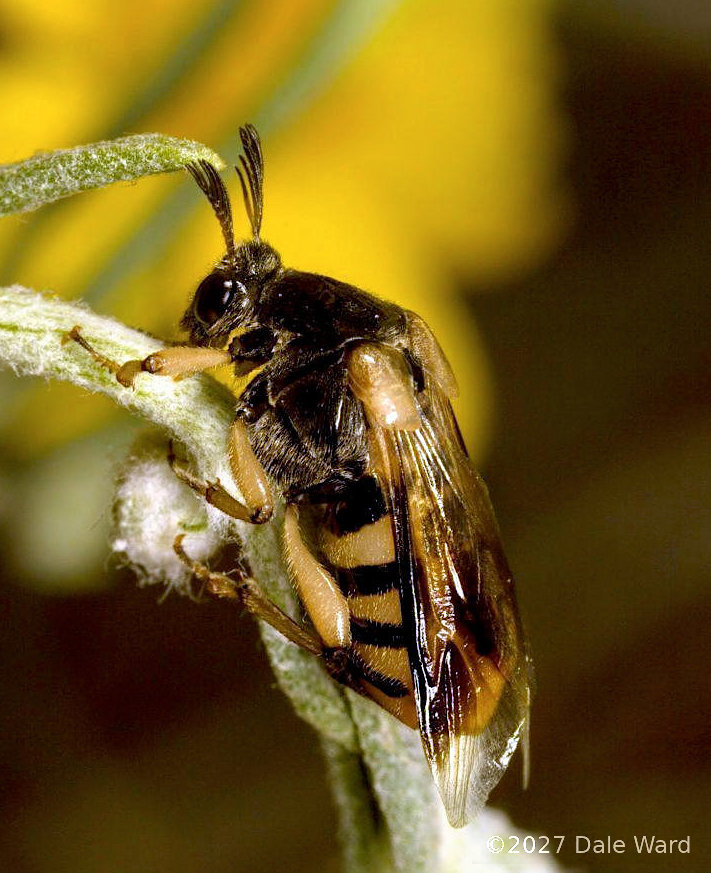Ripiphorus Beetle
Watching a Rhipiphorus Beetle - a beetle with an interesting relationship to bees - in the Sonoran Desert
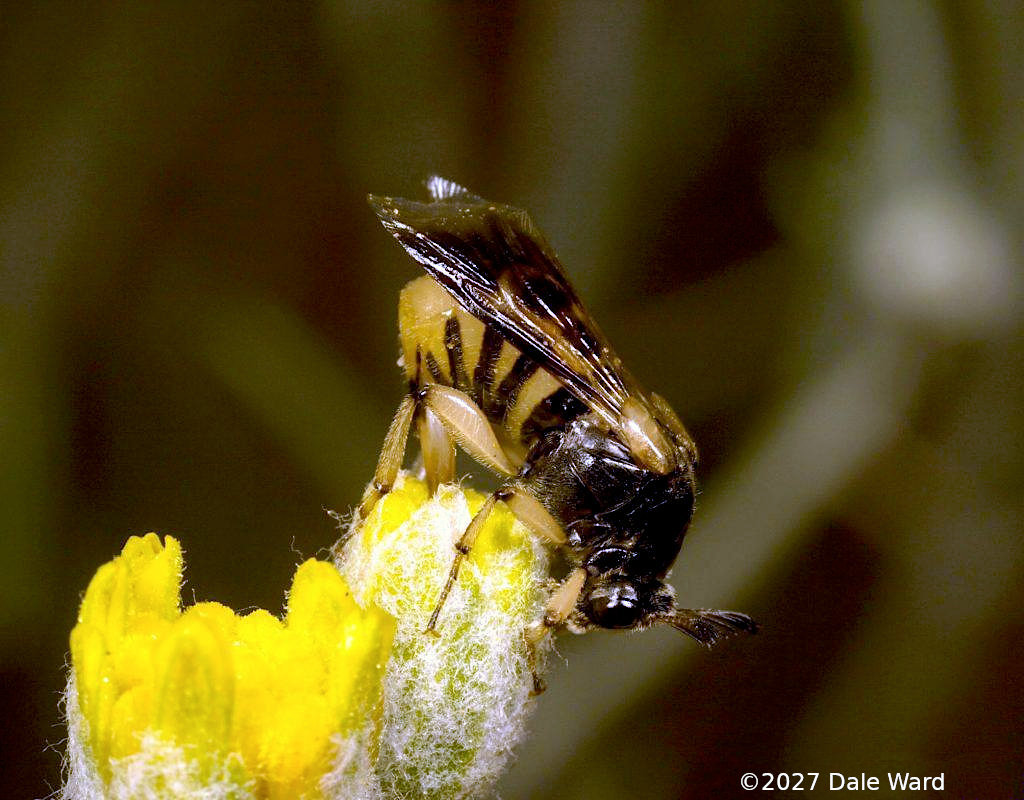 Rhipiphorus beetle laying eggs in a Desert Marigold
Rhipiphorus beetle laying eggs in a Desert Marigold
In April of 2005, I was hiking through the Sonoran Desert just outside of Tucson. I stopped to look at some Desert Marigolds that were just starting to open. There was a black and yellow insect flying around the flowers. I stopped and took some photos of it, thinking I would identify it more fully when I got home.
When I had a better chance to look at the photos, I had no idea what the insect was. It certainly was strange, though.
It wasn’t a wasp, nor a bee. Hmm. Maybe it’s a sawfly? No, that doesn’t fit, either. I finally sent an email to Stephen Buchmann, the author of The Forgotten Pollinators.
He most graciously identified the insect as a Rhipophorus Beetle - a Wedge-Shaped Beetle(!).
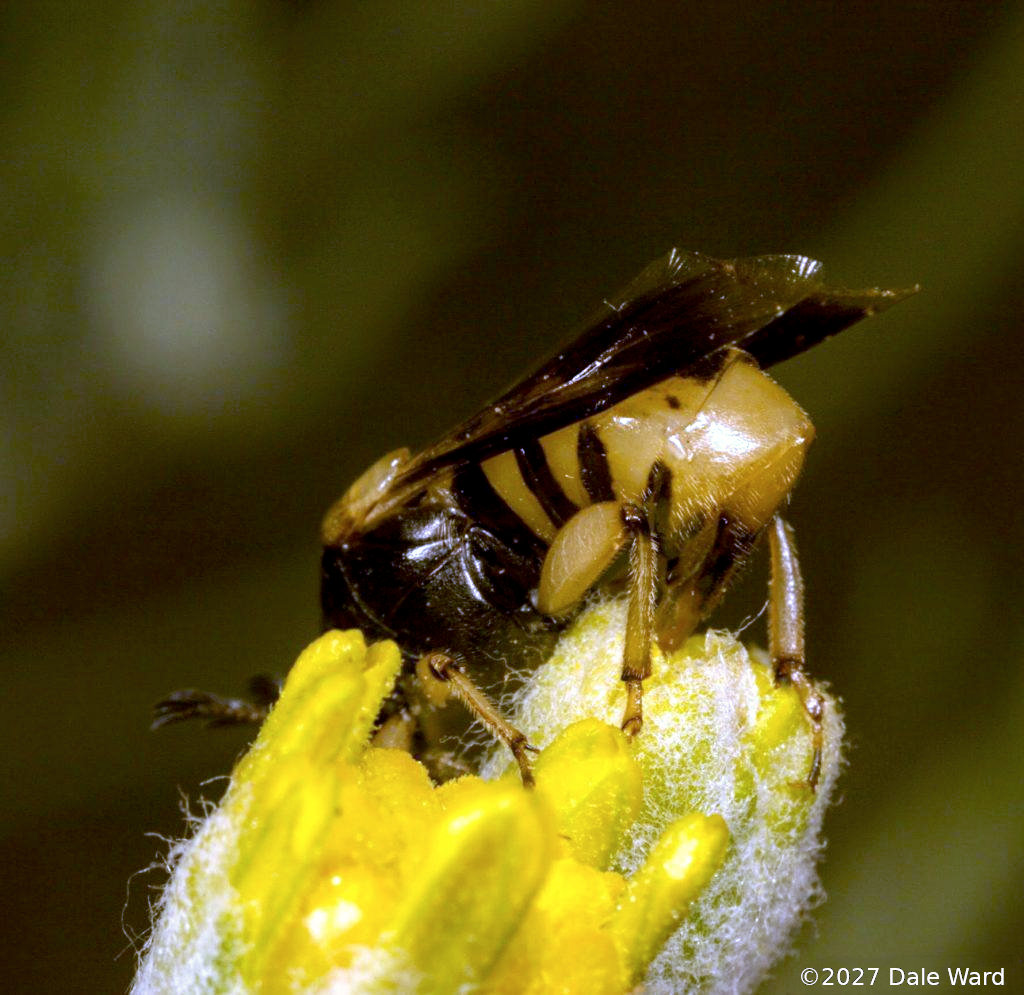 Rhipiphorus beetle laying eggs into a blossom. Check out how robust her ovipositor is.
Rhipiphorus beetle laying eggs into a blossom. Check out how robust her ovipositor is.
That’s a very, very cool thing to find. Rhipophorus Beetle larvae are parasitic on solitary bees. The beetle I photographed was laying eggs in the flower. They would hatch into larvae that don’t look like a beetle at all, but rather are shaped like small, very active mealworms, or highly attenuated Sow Bugs. These larvae are called “triungulins”.
When the flower opens, Solitary Bees such as Diadasia visit the flowers. One of the BBC Attenborough specials has footage of the triungulins when a bee visits. The triungulins stretch out way out and wave their arms, looking like very skinny, active ticks, and grab onto the adult bee.
But they don’t attempt to eat the bee - rather, they use the bee as transport. The bee flies off, and the triungulin goes with it.
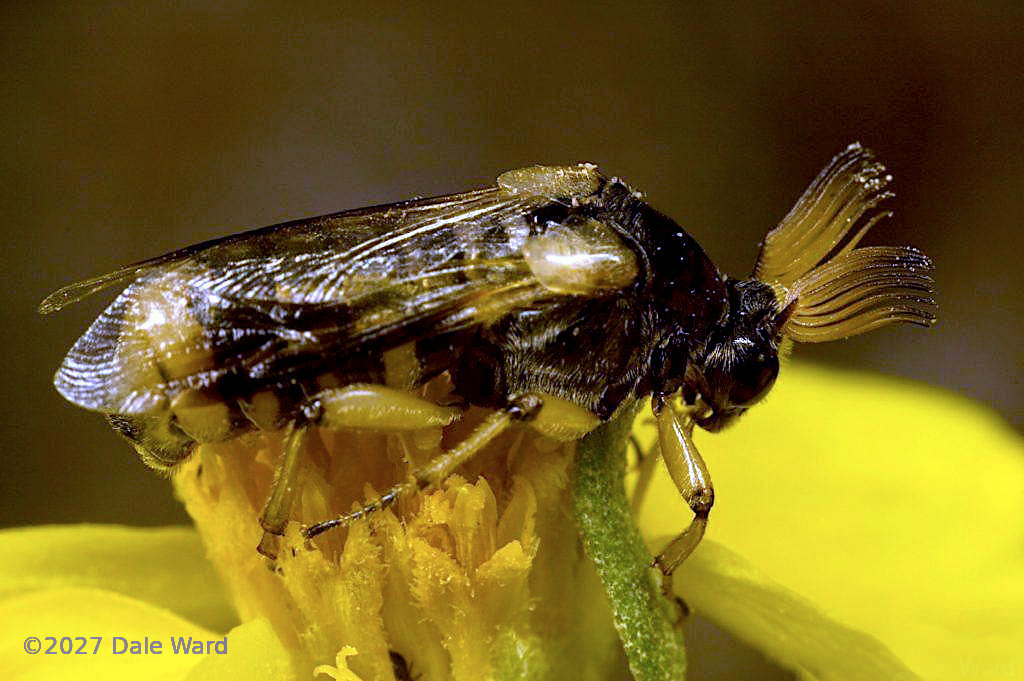 Rhipophorus Beetle. Those antennae should have told me this was a beetle!
Rhipophorus Beetle. Those antennae should have told me this was a beetle!
The triungulin stays on the bee until the bee returns to its nest. Then the larvae hop off of the adult bee and onto the bee’s eggs and larva. The triungulin metamorphoses out of the highly active stage triungulin stage and turn into a more sedate, grub-like larvae.
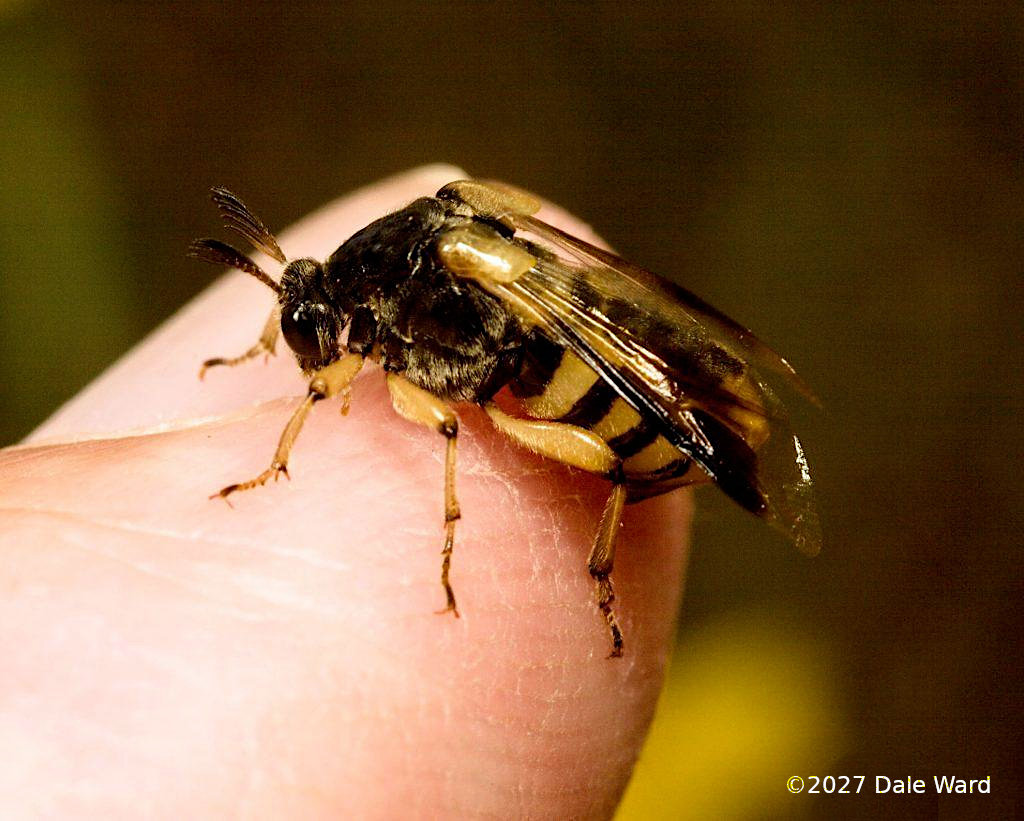 Rhipophorid Beetle in my fingers, for scale
Rhipophorid Beetle in my fingers, for scale
These grub-like larvae feed on the bee’s larvae. Some species of Wedge-Shaped Beetle consume the bee larva entirely, others evidently leave after feeding on the larva for a while. I’m guessing this one consumes the bee entirely - these are pretty large beetles.
The Arizona: Beetles, Bugs and more website suggests that the species of this beetle is Rhipohorus vierecki.
